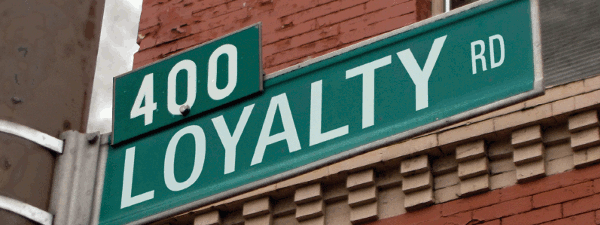3 Takeaways from a Successful Loyalty Program Launch
 A few weeks ago I listened in on a webinar presented by Loyalty360 and the folks at Walgreens, the producers of one of the most successful loyalty programs as of late. With around 100 million members, their Balance® Rewards program, which was launched in September 2012, has become somewhat of a loyalty program legend in the industry. What makes it even more impressive is that the planning and launch of this program occurred in within a very short timeframe (less than one year.) So how did they do it? And why is it so successful?
A few weeks ago I listened in on a webinar presented by Loyalty360 and the folks at Walgreens, the producers of one of the most successful loyalty programs as of late. With around 100 million members, their Balance® Rewards program, which was launched in September 2012, has become somewhat of a loyalty program legend in the industry. What makes it even more impressive is that the planning and launch of this program occurred in within a very short timeframe (less than one year.) So how did they do it? And why is it so successful?
Communications and Collaboration Equal Success
The Walgreens team, with 8,000+ stores and more than 200,000 associates, knew that in order to be successful, communication and collaboration was key. To prep for the launch of the program, they established a robust infrastructure that allowed them to collaborate across several stakeholder groups. Committees, established within these groups, communicated monthly, weekly and then bi-weekly as they neared their launch date. This constant communication engaged all employees at every level of the organization, including store associates. The program was rolled out to employees 30 days prior to the launch so that they could become familiar with its features and intelligently speak about it with customers. Additionally, the associate’s employee discounts were tied-into their Balance® Rewards account in order to prompt them to enroll in the program themselves.
Key takeaway: In order to successfully launch a loyalty program you must communicate, communicate and communicate – across all team members. Not only does this help employees feel comfortable with the program, but it also allows them to provide feedback on any issues or questions that they may have.
Pilot Programs Help Refine Strategies
Knowing that the top 20% of customers generate 80% of sales, Walgreens knew that they wanted a program that would drive 1-to-1 engagement with their best customers. They implemented three pilot programs to help them test and understand what features would help engage customers. The customer data that they collected from these programs helped them refine their strategy and informed their technology team of the adjustments that would be needed for a national rollout.
Key takeaway: Ultimately, the final loyalty product looked very different from the pilot programs that Walgreens launched initially. Testing and refinement are key to develop a product that will appeal to your best customers.
Make it Easy for Your Customers
Prior to the national rollout of their Balance® Rewards program, Walgreens implemented a new POS system across all 8,000+ locations. This POS system, which provided customers with a paperless enrollment, eased the sign-up process and was crucial to the success of the program. On day one, Walgreens had just short of one million members enrolled. Members currently have the choice of using their Balance® Rewards card, the mobile app or the POS terminal to access their program upon checkout.
Key takeaway: Make it easy for customer to sign-up for your loyalty program and give them the options of how they would like to access it. Mobile apps do not appeal to all customers, especially folks that are not tech-savvy, so study your customer’s demographics and habits and provide them with the tools that meet their comfort level.
Overall, the numbers of the Balance® Rewards program are impressive and Walgreen’s launch strategy can teach us a thing or two about the steps that need to be taken in order to ensure success. Communication across all team members, a pilot program that will provide informative customer data and ease-of-enrollment will put you on the right track to building your program membership.